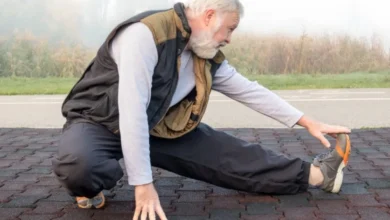Closing the Gap: Correcting Abdominal Muscle Separation

Abdominal muscle separation, medically known as diastasis recti, is a common condition that occurs when the right and left abdominal muscles spread apart at the body’s midline. Often associated with pregnancy, this condition can also affect anyone due to improper exercises, obesity, or other factors. The separation can lead to a bulge in the midsection, reduced core strength, and stability, affecting posture and leading to back pain. Fortunately, with the right approach, closing this gap and restoring abdominal integrity is achievable.
Contents
Understanding Diastasis Recti:
Diastasis recti occurs primarily in the linea alba, the connective tissue that holds the abdominal muscles together. Pregnancy puts significant pressure on this area due to the expanding uterus, leading to separation. However, any activity that excessively strains the abdominal area, such as lifting heavy weights incorrectly, can contribute to this condition.
Identifying diastasis recti involves a simple self-check:
- Lie on your back with your knees bent and feet flat on the floor.
- Place one hand behind your head and lift your shoulders slightly off the ground.
- With your other hand, gently press along the midline of your abdomen.
- Feel for a gap between the muscles above and below your navel.
A gap wider than two fingers is generally considered diastasis recti.
Effective Strategies for Correction
1. Engage in Proper Core Strengthening
Certain exercises can help in bringing the abdominal muscles back together, focusing on strengthening the transverse abdominis—the deepest layer of abdominal muscles.
- Pelvic Tilts: Lie on your back with knees bent. Tighten your stomach and tilt your pelvis towards your head. Hold for a few seconds, then release.
- Heel Slides: Lie with knees bent. Slowly slide one heel out until your leg is straight, keeping your abdominal muscles tight. Return to starting position and repeat on the other side.
- Leg Lifts: Start in the same position. Lift one leg a few inches off the ground, hold, and lower. Repeat with the other leg.
Avoid traditional crunches, sit-ups, or any exercise that causes your abdominal area to bulge outwards, as these can exacerbate the separation.
2. Practice Good Posture
Good posture supports abdominal healing by reducing unnecessary strain on the midline. Be mindful of your posture while sitting, standing, and walking—keep your shoulders back, chin up, and engage your core muscles.
3. Wear a Supportive Garment
In some cases, wearing a supportive garment or belly band can help in aligning the abdominal muscles and promoting healing. Ensure these garments are not too tight, as excessive compression can hinder circulation and muscle function.
4. Seek Professional Guidance
Physical therapy can be incredibly beneficial for those with diastasis recti. A physical therapist specialized in postpartum recovery can create a tailored exercise program that safely strengthens the core without further separating the muscles. In severe cases, surgery may be recommended to correct the separation.
Prevention and Awareness
While not all cases of diastasis recti can be prevented, especially those related to pregnancy, awareness of the condition and engaging in preventive measures can make a significant difference.
- Exercise Smart: Focus on core stability and strengthening exercises that do not strain the midline.
- Lift Correctly: Always lift from your knees, not your waist, to avoid putting undue pressure on your abdominal area.
- Monitor Your Weight: Maintaining a healthy weight reduces the strain on your abdominal muscles and connective tissue.
Exploring Tummy Tuck Options for Diastasis Recti Correction
For individuals facing severe diastasis recti that hasn’t responded well to conservative measures, surgical intervention might be considered. In Utah, there are leading specialists in abdominoplasty, commonly referred to as a ‘tummy tuck’. This surgical procedure not only corrects the separation of the abdominal muscles but also removes excess skin and fat, leading to a firmer and smoother abdominal profile.
Consulting with a board-certified plastic surgeon who has experience in addressing diastasis recti is crucial. They can provide a comprehensive evaluation and discuss personalized treatment options to achieve the best outcomes. Remember, surgery is typically recommended after all non-surgical methods have been explored and if the physical and aesthetic concerns significantly impact the individual’s quality of life.
Correcting abdominal muscle separation takes time, patience, and consistency. By incorporating targeted exercises, maintaining good posture, following a nutritious diet, and seeking professional advice when necessary, it’s possible to significantly improve the condition. Remember, the key is to progress gradually and listen to your body, avoiding any activities that seem to worsen the separation. With dedication and the right approach, closing the gap caused by diastasis recti and regaining a strong, functional core is within reach.


